Introduction to Sedum and Rock Gardens
Inviting and rugged, rock gardens evoke the beauty of mountainous terrains and arid landscapes, serving as a testament to the power of nature’s resilience. Within these stony enclaves, sedum – a genus of more than 400 species of leaf succulents – emerges as the unsung hero, a modest yet steadfast occupant of crevices and alcoves. But why do these green pioneers find a haven among rocks? Let’s delve into the symbiotic relationship between sedum plants and the rocky embrace of rock gardens.
Imagine a tapestry of colors, textures, and life, intricately woven amongst stones that have borne the weight of the ages. This is the domain where sedum plants not only grow but thrive. Adaptable and hardy, these succulents are designed for survival under the most challenging conditions. Their thick, fleshy leaves are able to store water, affording them the resilience to endure drought and heat – typical of the rocky environments they are often found in.
Rock gardens, with their nooks and crannies, mimic the natural habitats of many sedum species. It’s this intricate dance of form and function that enables sedum to flourish, as rocks regulate temperature, provide drainage, and minimize competition from more aggressive, moisture-loving plants. From the seasoned gardener to the casual observer, one can’t help but admire the hardiness and aesthetic appeal of these low-maintenance warriors in their stony strongholds.
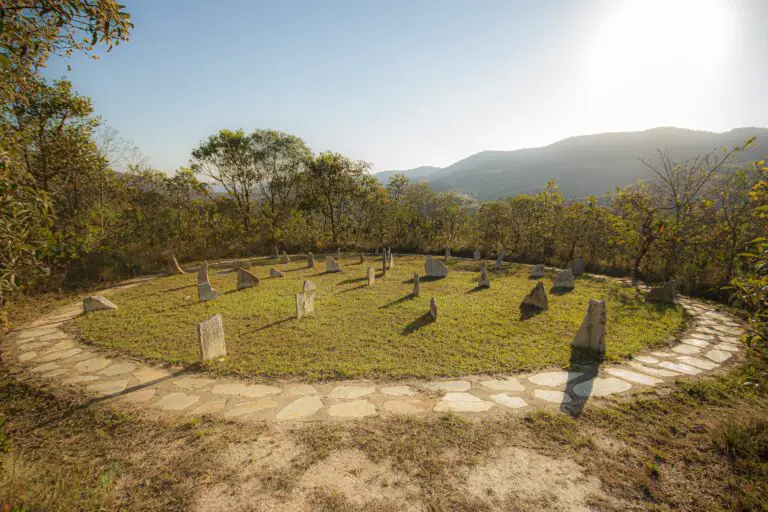
Take, for example, Sedum reflexum, also known as stonecrop, which clings to life in the Alpine cliffs. In our managed rock gardens, this sedum brings that rugged mountain character to the domestic landscape, proving that even within the confines of our backyards, nature’s gritty narrative persists. Stories of adaptation and survival are etched into every leaf and stem, shared silently amidst the stones that offer refuge to these living jewels.
Indeed, sedum’s partnership with rocks in gardens is less of a coincidence and more of a calculated alliance. It is a testament to the tenacity of life and its ability to find a foothold, quite literally, in the most unexpected of places. As we explore rock gardens, we uncover not just the relationship between stone and plant, but also the broader dialogue between humanity and nature, a dialogue that continues to shape our understanding of the environments we cultivate and the organisms we share them with.
Why Rocks Make a Good Home for Sedum
Envision a rugged landscape, where resilient plants cling tenaciously to life amongst the stones, thriving where others may falter. Among these champions of survival, sedum plants stand out with their rugged adaptability. But why do these enduring succulents find solace in stony environments? The secret lies in their remarkable resilience and their uncanny ability to flourish in the sparse crevices of rocky terrains.
The rocky abode is not an odd choice for sedum plants when you consider their drought-tolerant nature. These succulents store water in their fleshy leaves, allowing them to withstand prolonged periods without rain, just as they would on a sunbathed crag or a dusty plain. Indeed, sedum does not merely survive in such harsh habitats; it thrives, spreading its roots in rocky crevices where soil is minimal and other plants might struggle. Take a gander at this guide for inspiration on creating a stunning rock garden design with the sedum’s vibrant cousins, Sempervivum, adding vivid colors to your stony oasis.
Moreover, rocks offer excellent drainage, a fact that the sedum gratefully appreciates. These succulents loathe waterlogged conditions which can lead to root rot, a death sentence for otherwise hardy specimens. Rocky outcrops naturally wick away moisture, ensuring that roots stay healthy and aerated. By evoking the spirit of the wild, robust mountain landscapes within your own garden, you contribute to the survival story of these remarkable plants. A quick glance at gardening expertise will confirm that mastering the art of sedum care is within reach of even those new to the world of succulents.
Real-life examples abound of sedum embracing the rocky life—it’s not uncommon to see these steadfast survivors sprouting in the gravelly tracks of a hiking path or gripping the jagged edges of a rock wall. They’re a testament to the sedum’s perseverance, a living emblem of nature’s tenacity.
But let’s not overlook the visuals; sedum in rocks is a sight to behold. The contrast between the soft green, red, or purple hues of the leaves against the unyielding stone is a painterly scene—a natural work of art wrought by the interplay of flora and mineral. Picture the serene beauty as you gaze upon this 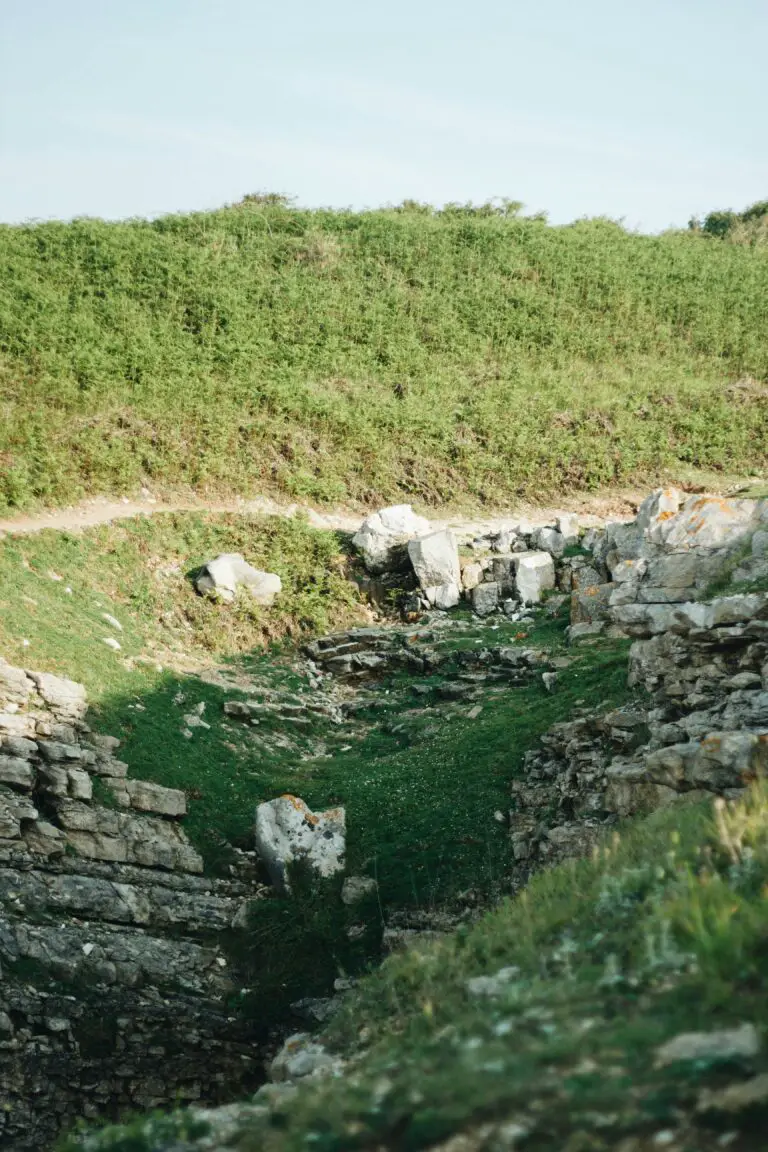 —it captures the essence of sedum’s harmonious existence amongst the stones.
—it captures the essence of sedum’s harmonious existence amongst the stones.
So, whether you’re a gardener looking to replicate the majestic austerity of alpine ridges or a succulent enthusiast seeking to craft a serene rockery, consider the sedum. Its ability to prosper amid the rocks is not just about survival; it’s a bold statement of life’s adaptability and beauty in the most unexpected places.
“`html
Choosing the Right Sedum Species for Your Rock Garden
If you’re looking to add some green to your stony sanctuary, you’re in luck! Sedum, a generous genus of succulents, is here to turn your rock garden dreams into reality. With their robust nature and low-maintenance attraction, they are just the right companions for your rocky landscapes. But not all sedum are cut from the same cloth—some are real rock stars, embracing the gritty life with ease.
Enter the realm of ‘Stonecrop,’ where the Sedum acre steals the show. This vibrant green sprite laughs in the face of droughts and frolics among pebbles with its yellow blossoms. Imagine the sedums as tenacious climbers gripping the steep rock faces of mountains; that’s the kind of vigor we’re talking about!
Looking for something a little more exotic? The Sedum reflexum, also known as ‘Blue Spruce,’ presents fleshy leaves with a touch of frosty blue magic. They glitter like sapphires among the rocks and offer a cool contrast to the often-warm tones of the stones. And let’s not forget the beloved Sedum spurium, with leaves that turn a fiery red, setting your rocky enclave ablaze with color.
For those with a penchant for purple, the Sedum Sieboldii adds a burst of lavender to the mix. This particular species is akin to a botanical artist adept at painting your rock garden with strokes of unique beauty. If you are curious about keeping your succulent companions thriving, take a stroll through our insights on succulent care.
But don’t just take our word for it; witness these marvels in their full splendor. Have a gander at this video and get inspired to create your own sedum-studded spectacle:
Choosing the right sedum for your rock garden is not just about survival; it’s about creating a tapestry of texture and color that will stand the test of time. These rugged beauties are more than capable of spicing up your stony retreat. The sedum life is one of resilience, versatility, and undeniable charm, making them the perfect pick for your rock garden adventures!
“`
Planting Sedum in Rocky Soil: A Step-by-Step Guide
Ever marvel at the resilience of plants that thrive in the most inhospitable places? Take sedum, the unassuming hero of rocky landscapes and gravelly terrain. Whether it’s clinging to the edge of a cliff or nestling in a stone wall’s crevice, sedum’s adaptability is a thing of beauty and inspiration. Let’s turn that admiration into action with a practical guide to introducing these hardy succulents into your rock garden’s rugged embrace.
First things first, sedum demands minimal fuss but the right start can make a world of difference. Begin with selecting the right species—those that practically sing in the stony soil. Sedum acre, also known as goldmoss, is an excellent choice, painting your garden in hues of emerald green and yellow stars. Meanwhile, the dramatic ‘Dragon’s Blood’ sedum boasts deep red foliage, offering a stunning contrast against the grey canvas of rocks.
Site selection is paramount. These sun-loving succulents covet the limelight, so find a spot where the rays can shower them with at least six hours of sunshine. The slope of a rocky hillside? Perfect. Alongside a gravel path? Ideal. These hardy perennials aren’t just survivors; they’re sunshine connoisseurs. Here’s a source that dives deep into the sunny world of sedum and their preferred haunts.
Step 1: Brave the Stones
Digging in rocky soil might seem daunting—like nature’s version of a tough love workout regime. But fear not! With determination and a sturdy spade, even the most challenging terrain can become a sedum sanctuary. Dig a hole that’s twice as wide as it is deep, ensuring plenty of room for roots to stretch and mingle with the minerals beneath them.
Step 2: Enrich & Plant
Now, let’s get those hands dirty. Mix in some organic compost with the excavated soil. This isn’t about pampering; it’s about balance. The compost will hold onto moisture just long enough for the sedum roots to drink their fill without getting waterlogged. Place your sedum into the hole, gently patting the soil around it, and whisper words of encouragement—plants like a little pep talk, too.
Step 3: Water Wisely
Once your sedum is snugly in place, it’s time for a celebratory watering. But let’s not host a pool party in the hole; sedum prefers its soil on the dry side, a toast rather than a drench. A gentle shower to settle the soil and roots will do the trick. After this initial watering, nature and the natural drainage of the rocky terrain will mostly take over the hydrating helm.
The compatibility of sedum with stones is a beautiful testament to resilience. Observe this guide on succulent care for more tips on nurturing these steadfast companions. To bring it all to life, visualize sedum’s success in the rockiest of locations 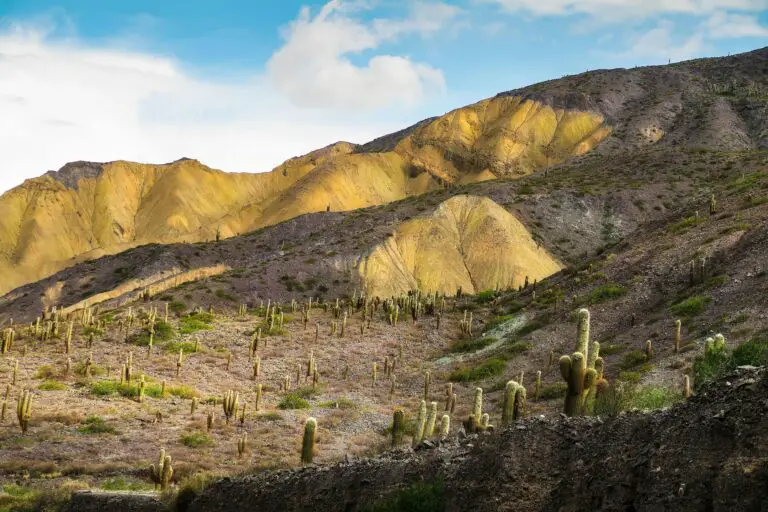 .
.
It’s this simple-yet-methodical approach that can turn a barren rocky landscape into a triumph of color and life. By following these straightforward steps, watch as your rock garden transforms into a testament to nature’s tenacious beauty. So get out there, brave the stony silence, and let the sedum show you the magnificent potential of your once-forgotten rocky corners.
Caring for Sedum in Rock Surroundings
Picture this: a sun-drenched rock garden, the stones heated by the sun’s rays, a mosaic of greenery weaving its way through the cracks and crevices. This isn’t a scene from a fairy tale—it’s your garden, and it’s thriving thanks to the resilient sedum plants nestled among the rocks. But how do you ensure these hardy succulents flourish in such a seemingly unforgiving environment? Let’s embark on the journey of caring for sedum in rocky habitats.
Choosing the Right Spot for Your Sedum Sanctuary
First things first, location is everything. Sedum plants revel in the spotlight—sunlight, that is. Find a space where the sun kisses the earth for most of the day. The natural drainage provided by stones ensures that your sedum won’t suffer from wet feet, a true testament to the saying ‘location, location, location’. Remember, the perfect sunlit rockery is the ultimate sedum stage.
The Watering Wisdom: Less Is More
When it comes to hydration, sedum plants play by their own rules. They are the camels of the plant kingdom, storing water in their fleshy leaves to endure dry spells. Overwatering is the nemesis of these drought-tolerant dynamos. To avoid the pitfalls of puddles, initiate a watering regime that is sporadic yet meaningful—think of it as an occasional deep drink rather than a frequent sip.
Feeding Finesse: The Nutrient Balancing Act
While sedum are low-maintenance muses, they still enjoy a good meal. However, their appetite is modest. Overfeeding can lead to leggy growth, much like a lanky teenager in a growth spurt. To prevent such awkward phases, a balanced, slow-release fertilizer applied at the onset of the growing season will suffice, followed by unconditional love and admiration as they bloom beautifully in return.
Springtime Sedum Spa: Pruning and Pampering
As spring awakens the dormant world, your sedum will emerge from its winter rest, ready for a seasonal spa. A thoughtful pruning will encourage bushy growth and bolster its vigour. Snip away any dead or damaged tissue—think of it as a sedum haircut, paving the way for fresh growth and renewed energy.
Trouble in Paradise? Dealing with Pests and Problems
It’s not all sunshine in the world of rock gardening. Pests may occasionally pay a visit, seeking to feast on your sedum’s succulent leaves. Vigilance and swift action are your allies here. Keep an eye out for unwelcome guests and employ organic measures to show them the door. After all, your rock garden is a sedum sanctuary, not a pest party.
To give you a visual guide on nurturing your sedum, here’s an inspiring video that delves into the art of sedum care:
Equipped with these insights, go forth and create your own stone-studded sedum spectacle. It’s high time your green thumb met those grey stones, blending the canvas of nature with the art of gardening. Sedum’s adaptability to rock surroundings is a marvel; let’s celebrate its resilience by offering the care it deserves to shine in the rocky realms!
Design Ideas for Incorporating Sedum into Rock Gardens
Envision a serene landscape where the rugged beauty of stones mingles harmoniously with the lush succulence of sedum plants. This isn’t just a dream; with the right approach, you can create a picturesque tableau in your own backyard. Rock gardens, with their delightful nooks and crannies, provide the perfect canvas for the resilient sedum, a plant that not only endures but thrives in rocky terrains.
Let’s embark on a creative journey to design a rock garden that accentuates the natural charm of sedum. Imagine clusters of these hearty plants peeking through a tapestry of varied stones, from smooth river rocks to jagged shale pieces. By forming pockets of soil in between the rocks, you can create a micro-environment that offers adequate nourishment while ensuring good drainage—a must-have for sedums to flourish.
Consider the sedum’s foliage when selecting companions for your rock garden. Sedum plants come in a spectrum of colors, from vibrant greens to deep burgundies, adding depth to your garden palette. Picture a scene of sedums nestled against pale stones, their colors accentuated and their fleshy leaves artfully contrasted. Strategically placed limestone or sandstone can serve as a natural canvas, bringing out the unique hues of each sedum variety.
Not to be overlooked is the balance between formality and wildness. For an organic, rugged look, position your sedums in seemingly random patterns, letting them spill and cascade between the rocks. For a more structured aesthetic, arrange them in defined spaces or geometric formations. This disciplined approach can still embody the untamed spirit of rock gardens while offering a manicured sophistication that appeals to the eye.
For those looking to create a mesmerizing spectacle throughout the seasons, consider the life cycle of your sedum. Integrate species that bloom at different times to ensure a continuous display of flowers. As autumn arrives, watch your sedum transition, with their blossoms giving way to captivating seed heads that add winter interest to your frost-kissed rock garden.
Delve into the endless possibilities of sedum-rich rock garden designs with this informative video, showcasing creative ideas that you can implement in your own space:
As you plot the layout of your garden, think beyond the ground level. Elevate your design by building raised beds with layered stones, inviting the sedum to cascade over the edges like a verdant waterfall. This vertical element adds dimension and can turn a simple rock garden into a centerpiece that draws the eye.
Remember to imbue your rock garden with personality by incorporating elements that reflect your style. Whether it’s a rustic birdbath, a sleek sculpture, or a mosaic of colorful pebbles, these additions will make your sedum landscape uniquely yours. By marrying the resilient beauty of sedum with the enduring strength of rocks, you’ll create a living work of art that delights the senses and nurtures the soul.
Common Challenges and Solutions for Growing Sedum in Rocks
Envisioning a lush rock garden adorned with the versatile sedum plants can be a visual treat, but translating that vision into reality has its own set of rocky hurdles. Despite their robust nature, establishing sedums in a stony environment can be as tough as the terrain they’re meant to conquer. Let’s delve into some common challenges gardeners face and explore the foolproof solutions for ensuring these hardy succulents thrive amongst the stones.
Struggle for Soil: How to Ensure Sedum Success
One of the first challenges sedum encounters is the lack of nutrient-rich soil often found in rocky landscapes. Without a generous bed to spread their roots, sedums might just call it quits before they even start. But fear not, for the solution lies in amending the crevices. By introducing a blend of compost and soil into the rock interstices, you’re giving your sedums a sumptuous feast to grow on, much like sprinkling fertile fairy dust over your stony setup. Before long, you’ll see these tenacious plants weaving their way through the rocks like green threads in nature’s tapestry.
Battling Drought Conditions: A Sedum’s Thirst Quencher
Drought is another adversary for sedums in their rocky domains. How does one ensure these succulents get their fill of H2O? It’s simple—water them deeply but infrequently. During the drought season, a sedum’s survival instinct kicks in, and they begin to conserve water. By giving them a deep soak, you’re allowing their root system to lap up every last drop before the rocks have the chance to wick away the moisture—a hydration hack that keeps these hardy plants plump and prosperous.
Fending off Frost: Sedums in Icy Incarceration
With a chill in the air, frost can be the unwanted winter guest that locks sedums in an icy embrace. Protect these stone-loving plants by mimicking their natural alpine habitat. A layer of mulch can act as a thermal blanket, ensuring that even when Jack Frost is painting the town white, your sedums stay cozy and content beneath a snug layer of protective warmth. Thus, when spring awakens, your sedums will emerge unscathed and ready to dazzle once more in the rock realm.
Embed this image of sedum flourishing amid the stony challenges, a testament to the resilience and beauty of nature’s tenacity.

Real-life examples abound of these rock-garden champions: from the sedums peeking through railway gravel that refuse to yield to the locomotive’s might, to those adorning alpine cliffs, laughing in the face of vertiginous drops. These are the stories of triumph that sedum enthusiasts seek to replicate in their gardens. And though the path may be stony, the solutions are ripe for the picking—because where there’s a will (and a bit of wisdom), there’s a way.
Boosting Sedum Health: Tips and Tricks
When it comes to sedum, these succulent beauties are not just survivors; they’re natural-born rock stars, quite literally. Thriving in the craggy confines of stony landscapes, sedum plants have a tenacity that garden enthusiasts admire. But how can we, as dedicated gardeners, elevate their resilience to new heights, ensuring they burst with vibrancy amongst the stones? Let’s delve into the expert tips that will bolster the health of your rock garden’s toughest contenders.
First off, the soil is the cornerstone of sedum prosperity. While these hardy specimens can perch atop rocky outcrops with ease, a thoughtful soil amendment can be the secret sauce to their success. To mimic the well-draining conditions they adore, integrate gritty material such as coarse sand, pumice, or volcanic rock into the soil mix. These additions will prevent water from loitering around the roots, a situation sedum roots are apt to shun.
As paradoxical as it may sound, the right watering practice for sedum is to—wait for it—hold back on the watering can. Overzealous hydration is the Achilles’ heel for these drought-tolerant plants. Emulate the natural circumstances where sedum thrives by allowing the soil to dry completely between watering spells. This simulates the arid environments sedum favors, triggering the plant to harness its inner vigor and flourish with minimal moisture.
Consider, for instance, the crevice garden enthusiasts who craft intricate labyrinths of stones, artfully placing sedum species in the narrow gaps. These designers are not just creating visual wonderlands; they’re strategically promoting the drainage sedum requires. They might be the rock whisperers of the gardening world, interpreting the silent language of these succulents to optimize their growth. Follow their example: treat watering as a precious resource, and your sedum will reward you by thriving in the most skeletal soils.
No conversation about sedum care would be complete without mentioning sunlight. Sunbeams are the lifeblood of these plants. Ensure your rocky retreat offers plenty of unfiltered daylight. While sedum can endure partial shade, they truly come alive under the generous glow of the sun, their foliage illuminating into a tapestry of colors ranging from jade greens to fiery reds.
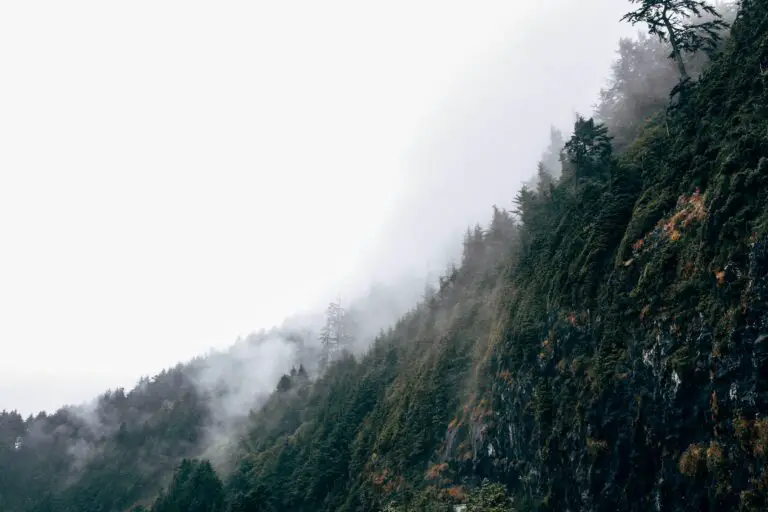
By heeding these tips and tricks, you’ll not only boost the health of your sedum but also deepen your connection with these astonishingly adaptable plants. Remember that each stone, each handful of gritty soil, and every ray of sunshine is an invitation for your sedum to display its full potential. So, tend to these resilient rock dwellers with a mindful approach, and watch as your garden transforms into a stronghold of sedum splendor.
Success Stories: Testimonials of Sedum in Rock Gardens
The natural charm and ease of maintenance of sedum plants have made them a celebrated choice for rock garden enthusiasts. Their ability to flourish in the crevices of stones and gravelly soil is not just a tale of survival but of verdant triumph. Let’s delve into the experiential notes from individuals who have watched these hardy succulents not just endure but thrive amongst the stony landscapes.
In the sun-washed hills of western Colorado, landscaper Emily Raine marvels at the vibrant tapestry she’s nurtured. Amidst a spread of jagged shale, Emily recounts how her ‘Dragon’s Blood’ sedum, with its striking red foliage, provides a stunning contrast to the neutral tones of rocks. “It’s like the sedum set the stones ablaze,” she shares. Her rock garden, despite the harsh summer heat and minimal rainfall, is a testament to the resilience of sedum in seemingly inhospitable terrains.
Further testament comes from Mark Ellison, a homeowner in Olympia, Washington, who had struggled with his shaded rockery. That is, until he introduced the ‘Cape Blanco’ sedum. Mark expresses his initial skepticism turned delight, “I never imagined this silver-green succulent would not only adapt but also brighten the shaded nooks of my garden, where very few plants dare to venture.” It’s through stories like Mark’s that the adaptability of sedum becomes irrefutably evident.
Not all rock gardens are sprawling spaces—some are compact urban nooks. Clara Benson, living in the bustling city of San Francisco, extols her sedum roof garden as an oasis amidst concrete. “Before, I used to gaze out onto a drab flat roof; now, it’s an undulating sea of sedum—low maintenance yet alive with soft textures and hues,” Clara exclaims. Her rooftop with sedum varieties like ‘Album’ and ‘Angelina’ demonstrates that rocky substrates go beyond the ground—sedum’s hardiness prevails even in vertical gardens.
What truly encapsulates the success of sedum in rock gardens are the pictures of lush growth against unforgiving stone. There is harmony in the juxtaposition—life thrives in the face of rigidity. For those seeking inspiration or considering a foray into rock gardening with sedum, these stories are not only educational but also a source of encouragement, illuminating the remarkable potential of these versatile plants to enliven stony landscapes.
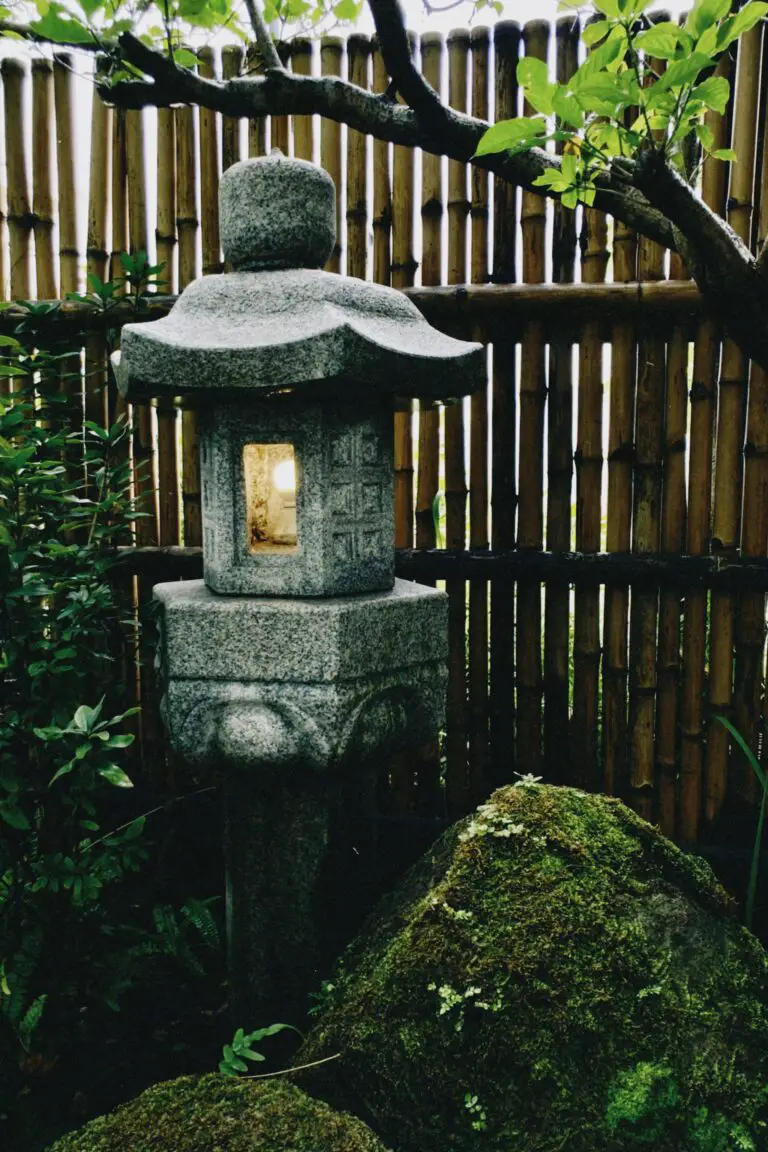
As these vignettes unveil, sedum’s success in rock gardens isn’t just an occurrence; it’s a celebration. It’s about turning rocky terrains into a canvas for horticultural expression and about letting nature exhibit its enduring power in partnership with dedicated gardening artisans. The rebirth of rocks as platforms for life, cradling the lush foliage of sedum species, is a sight to behold and a story worth retelling.
Frequently Asked Questions
Q: Can sedum really thrive in rocky environments?
A: Absolutely! Sedums are like the mountain goats of the plant world — they don’t just survive in rocky terrains; they flourish. With their succulent leaves and hardy habits, these little troopers cling to nooks and crannies, making the sparse soil of rocky gardens burst with life.
Q: What types of sedum are best suited for growing amongst stones?
A: If you’re looking to jazz up your rock garden, you can’t go wrong with Sedum acre or Sedum reflexum. These ground huggers are not only charming—they’re also as tough as the rocks they bedazzle!
Q: How do you plant sedum in a rocky space?
A: Planting sedum in rocks is like setting a gemstone — it’s all about finding the right spot. Look for natural pockets or crevices between the rocks and tuck in your sedum. A spoonful of soil is all they need to get started on their rock-hugging journey.
Q: How much care do sedums in rock gardens require?
A: Sedums are the ‘set it and forget it’ of the plant kingdom. They ask for very little — just some sunshine and a sip of water now and then. Overcare is their kryptonite, so go easy on the loving!
Q: Will sedum spread over the rocks?
A: Like a beautiful groundcover tapestry, sedum will spread its tendrils across the rocky surface, covering it with a living blanket of greenery and blooms. It is a sight to behold as they sweep across the stones like a vegetative tidal wave.
Real-Life Rockstars!
Take a moment to imagine a sedum, snug in its rocky abode, braving the elements with a resilience that’s nothing short of inspiring. These real-life rockstars are a testament to nature’s adaptability and an eye-catcher in any garden!
Incorporate sedum into your rocky enclaves, and watch as these plucky plants transform a barren stretch into a flourishing spectacle. Why not witness the charm of sedums in action right now? Check out this hands-on example:



